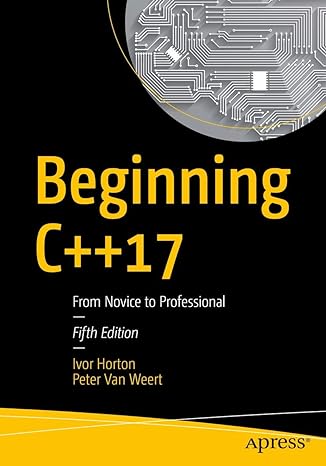Table of Contents
- What is a data type in C?
- 1) Integer Data Types
- 2) Character Data Types
- 3) Pointer Data Type
- 4) Floating point Data Types
- 5) Composite Data Types
- 6) Boolean Data Type in C
- Constants
- Portability Problems
- Data Type Conversion
What is a data type in C?
The C Programming language provides a standard and minimal set of basic data types. Sometimes these are called primitive data types. More complex data structures can be built up from these basic data types. Data types specify how we enter data into our C programs and what type of data we use for different operations. C language has some predefined set of data types to handle various kinds of data that we can use in our program.
1) Integer Data Types
The “integral” types in C form a family of integer types i.e. whole numbers without a fractional component such as int, short int, long int, long long int. They all behave like integers and can be mixed together and used in similar ways. The differences are due to the different number of bits used to implement each type.
int or integer data type
Integer or int is the default data type in C. It is at least 16 bits, with 32 bits being typical. If you do not really care about the range for an integer variable, declare it int since that is likely to be an appropriate size (16 or 32 bit) which works well for that machine.
short data type
short Small integer — at least 16 bits which provides a signed range of -32768 to 32767. This data type is not commonly used however it is used in situation where memory is an issue, for example in embedded system.
long or large integer data type
Large integer — at least 32 bits. Typical size is 32 bits which gives a signed range of about -2 billion ..+2 billion. Some C and C++ Compilers support “long long” for 64 bit ints so it may have a range of -9,223,372,036,854,775,808 to 9,223,372,036,854,775,807.
The integer types can be preceded by the qualifier unsigned which disallows representing negative numbers, but doubles the largest positive number re-presentable. For example, a 16 bit implementation of short can store numbers in the range -32768..32767, while unsigned short can store 0..65535. You can think of pointers as being a form of unsigned long on a machine with 4 byte pointers.
In my opinion, it is best to avoid using unsigned unless you really need to. It tends to cause more misunderstandings and problems than it is worth.
2) Character Data Types
char data type
The char data type is used to store single ASCII character. This data type is always a byte which is 8 bits which is enough to store a single ASCII character. It provides a signed range of -128..127 or an unsigned range is 0..255.
The char data type is also used to represent strings in C, which are sequences of characters. In this context, an array of char variables is used, with the last character being a null terminator \0 to indicate the end of the string. For example:
3) Pointer Data Type
In C and C++, a pointer is a data type that stores the memory address of another variable. Pointers allow you to manipulate memory directly. A pointer variable is declared by placing an asterisk * before the variable name i.e. int *, char *, double *, etc. For example you can declare a pointer as below:
4) Floating point Data Types
In C, a floating-point number is a data type used to represent real numbers, i.e., numbers with a fractional component. We use two data types to represent floating point number i.e. float and double. Single precision floating point number typical size 32 bits double Double precision floating point number typical size: 64 bits long double Possibly even bigger floating point number Constants in the source code such as 3.14 default to type double unless the are suffixed with an ‘f’ (float) or ‘l’ (long double).
Most C programs use double for their computations. The main reason to use float is to save memory if many numbers need to be stored. The main thing to remember about floating point numbers is that they are inexact. For example, what is the value of the following double expression?
The sum may or may not be 1.0 exactly, and it may vary from one type of machine to another.
You should never compare floating numbers to each other for equality (==) — use inequality (<) comparisons instead. Realize that a correct C program run on different computers may produce slightly different outputs in the rightmost digits of its floating point computations.
5) Composite Data Types
A composite data type in C is a data type that groups together multiple variables of different data types into a single unit. The individual variables in a composite data type are known as elements or members.
Composite data types allow you to represent more complex data structures in your program and make it easier to manage and manipulate related data. Examples of composite data types in C include arrays, structures (struct), and unions (union) and enumeration (enum).
6) Boolean Data Type in C
The C programming language does not have a distinct boolean data type, use int or char data type instead. The language treats integer 0 as false and all non-zero values as true. So the following statement will execute until the variable i takes on the value 10 at which time the expression (i – 10) will become false (i.e. 0).
Constants
A constant is a value that cannot be changed once it has been assigned. You can declare constants by using the const keyword. Constants are typically used to provide a fixed value that is used throughout a program, such as the value of pi or the maximum size of an array.
char Constants
A char constant is written with single quotes (‘) like ‘A’ or ‘z’. The char constant ‘A’ is really just a synonym for the ordinary integer value 65 which is the ASCII value for uppercase ‘A’. There are special case char constants, such as ‘\t’ for tab, for characters which are not convenient to type on a keyboard.
‘A’ uppercase ‘A’ character
‘\n’ newline character
‘\t’ tab character
‘\0’ the “null” character — integer value 0 (different from the char digit ‘0’)
‘\012’ the character with value 12 in octal, which is decimal 10
int Constants
Numbers in the source code such as 234 default to type int. They may be followed by an ‘L’ (upper or lower case) to designate that the constant should be a long such as 42L. An integer constant can be written with a leading 0x to indicate that it is expressed in hexadecimal — 0x10 is way of expressing the number 16. Similarly, a constant may be written in octal by preceding it with “0” — 012 is a way of expressing the number 10.
Portability Problems
Instead of defining the exact sizes of the integer types, C defines lower bounds. This makes it easier to implement C compilers on a wide range of hardware. In particular, if you are designing a function that will be implemented on several different machines, it is a good idea to use typedefs to set up types like Int32 for 32 bit int and Int16 for 16 bit int. That way you can prototype a function foo(Int32) and be confident that the typedefs for each machine will be set so that the function really takes exactly a 32 bit int. That way the code will behave the same on all the different machines.
Data Type Conversion
Promotion
In C, data type promotion refers to the automatic conversion of a lower precision data type to a higher precision data type. This conversion is performed by the compiler to ensure that the result of an expression is stored in the most appropriate data type.
For example, consider the following code:
Here, a is an int variable, and b is a float variable. When the expression a + b is evaluated, a is automatically promoted to a float so that it can be added to b. The result of the expression is a double, which is stored in c.
Truncation
The opposite of promotion, truncation moves a value from a higher precision data type to a smaller type. In that case, the compiler just drops the extra bits. It may or may not generate a compile time warning of the loss of information. Assigning from an integer to a smaller integer (e.g.. long to int, or int to char) drops the most significant bits. Assigning from a floating point type to an integer drops the fractional part of the number.
The assignment will drop the upper bits of the int 321. The lower 8 bits of the number 321 represents the number 65 (321 – 256). So the value of ch will be (char)65 which happens to be ‘A’.
The assignment of a floating point type to an integer type will drop the fractional part of the number. The following code will set i to the value 3. This happens when assigning a floating point number to an integer or passing a floating point number to a function which takes an integer.

Master modern programming with Beginning C++17 – your gateway to building powerful, efficient, and future-ready applications!
View on Amazon
If you want to see these data types in action, look at the following C Programs:





